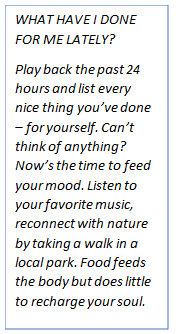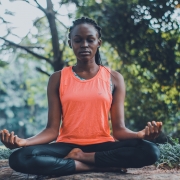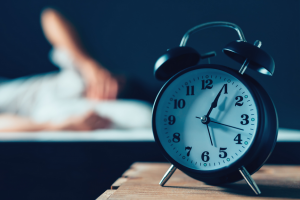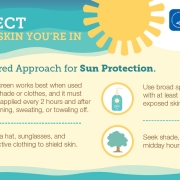Lighten Up to Live Your Healthiest Life
Research shows that there’s a surprising connection between elevating your mood and shedding stubborn pounds. It’s difficult to feel calm when you worry about what to eat, when to work out, and whether your effort will pay off – all while keeping up with your everyday obligations. So, someone suggesting you relax during this process is laughable.
Stress, like a roll of fat above your waistband, isn’t easy to shed. But by learning a few ways to slow down, put yourself first, and yes, relax, you can get both your stress levels and your weight under control for good.
THE ‘YOU FIRST’ EPIDEMIC
We all have times when we fall into a self-neglect rut, but lately that seems to be almost an epidemic. The American Psychological Associated reports that 44 percent of Americans believe the level of stress in their life is increasing, but only 9 percent think they handle it well. In studying the relationship between stress and being overweight, researches have zoned in on a key hormone called cortisol. You’ve probably heard of it, but it’s not necessarily a bad hormone. Our bodies use it to maintain blood pressure, and it plays a key role in the way we metabolize both fats and carbohydrates for energy.
 The trouble happens when we are under chronic stress and secrete too much cortisol for our bodies to break down properly. A common side effect of extra cortisol is increased appetite. Being constantly hungry is bad enough, but cortisol also tends to direct pounds to accumulate in the abdomen, rather than the hips, and this belly fat is closely linked to heart disease and stroke. Stress has the biggest impact on weight gain in individuals with an already-high body mass index (BMI), making stress and weight gain something of a vicious cycle.
The trouble happens when we are under chronic stress and secrete too much cortisol for our bodies to break down properly. A common side effect of extra cortisol is increased appetite. Being constantly hungry is bad enough, but cortisol also tends to direct pounds to accumulate in the abdomen, rather than the hips, and this belly fat is closely linked to heart disease and stroke. Stress has the biggest impact on weight gain in individuals with an already-high body mass index (BMI), making stress and weight gain something of a vicious cycle.
BREATHE YOUR WAY THIN
One of the most effective ways to manage stress is also one of the simplest: Just breathe. You hear this a lot in yoga class, but you don’t need a mat to practice it. Simply set a timer for eight minutes and find a comfortable position. Now begin. Inhale for a slow count of eight, hold, and then exhale for a count of eight. The first few times you try this, your mind will likely wander. Be patient – when you notice thoughts creeping in, just return to counting your breaths, and when you lose track, start over.
When the eight minutes are up, stop. Shooting for eight minutes a day is an amazing first step. Health benefits will kick in with repeated practice. Sticking with a deep breathing meditation practice for 8 weeks will change how your brain responds to stress. You may sense that you become less reactive to tension and that you have stress-proofed your body.




